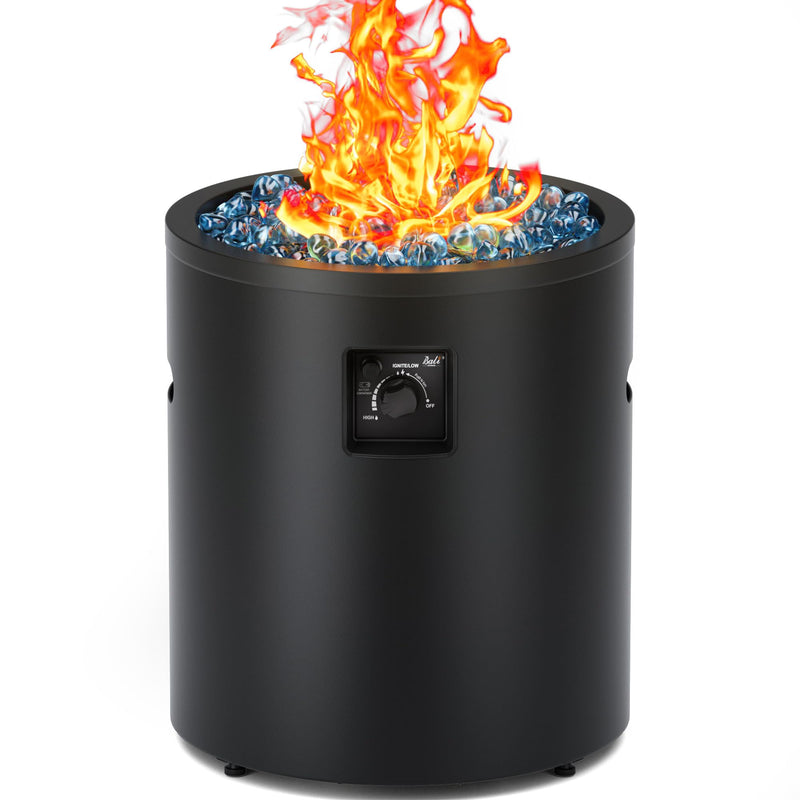Unlock the Secrets to Safely Dousing Your Fire Pit Like a Pro!
Fire pits have become a beloved feature in many backyards, providing warmth, ambiance, and a perfect gathering spot for friends and family. However, while enjoying the flickering flames and crackling sounds, it is crucial to remember the importance of safely extinguishing the fire once the night winds down. Improperly dousing a fire pit can lead to serious risks, such as uncontrolled flames or lingering hot embers that can ignite surrounding materials. In this article, we will explore safe techniques and essential tips for extinguishing your fire pit, ensuring that you can enjoy its cozy glow without the worry of potential hazards.

Understanding the Fire Pit
A fire pit serves as a central feature for outdoor gatherings, functioning as a source of heat and light while creating a cozy atmosphere. They can be made from various materials, including metal, stone, or brick, each affecting how the fire burns and how it should be extinguished. For instance, a metal fire pit may retain heat longer than one made of stone, which can influence the method you choose to safely put out the fire. Knowing your fire pit's material will help you select the best extinguishing technique, ensuring that the fire is completely out and that your outdoor space remains safe.
Why Proper Dousing is Important
Properly extinguishing your fire pit is essential not only for your safety but also for the safety of your environment. A poorly doused fire can lead to flare-ups, posing a risk to surrounding foliage, structures, and even wildlife. Furthermore, many local regulations dictate how open flames should be handled, and failing to adhere to these rules can result in fines or legal issues. Understanding the risks associated with improper dousing is crucial for responsible fire pit ownership, making it imperative to follow best practices when extinguishing the flames.
Steps to Safely Douse Your Fire Pit
Successfully extinguishing your fire pit requires a methodical approach. Here’s a step-by-step guide to ensure that you safely douse the flames:
- Let the Fire Burn Down: Allow the fire to burn down to a manageable level before attempting to extinguish it. This helps reduce the amount of fuel available and makes the dousing process easier.
- Gather Your Supplies: Depending on your chosen method, gather water, sand, or dirt. If using water, a bucket or hose is essential; for sand or dirt, a shovel will assist in smothering the fire effectively.
- Apply Your Chosen Method: If using water, start by pouring it slowly over the coals, ensuring that you cover all areas evenly. For sand or dirt, spread it over the fire pit, smothering all visible embers. Make sure to use enough material to cover the coals completely.
- Stir the Ashes: Use a stick or shovel to stir the ashes and ensure that all embers are fully extinguished. This step is crucial, as some hot spots may remain hidden under the surface.
- Check for Heat: Carefully feel for heat emanating from the ashes. If any area feels warm, continue to apply your extinguishing method until everything is cool to the touch.
Using Water
When using water to extinguish your fire pit, it’s important to apply it gradually. Start with a small amount, pouring it over the coals while monitoring the reaction. You want to ensure that steam is not produced excessively, as this indicates that you’re not dousing the fire thoroughly. A good rule of thumb is to use enough water to ensure that all ashes are saturated and that no embers are visible. Afterward, check for any remaining heat by feeling the surface of the ashes.
Using Sand or Dirt
If you opt for sand or dirt, this method can be incredibly effective in smothering the flames. Begin by dumping a generous amount over the embers, covering them entirely. The goal is to cut off the oxygen supply, which is essential for combustion. Once you’ve smothered the fire, use a shovel to mix the sand or dirt into the ashes, ensuring that every ember is suffocated. This method not only extinguishes the fire but can also help with cleanup, as it contains the ashes.
Aftercare and Safety Checks
After extinguishing your fire pit, it’s vital to conduct a thorough inspection. Make sure to check all areas of the fire pit to confirm that no embers remain. A lingering ember could reignite, leading to dangerous situations. Once you are confident that the fire is completely out, consider how you will store your materials. If you used water, ensure that the ashes are left to cool completely before disposing of them, as hot ashes can cause fires in trash bins. Additionally, maintaining your fire pit involves regular cleaning to prevent buildup of ash or grease, ensuring that it remains safe for future use.
Mastering Fire Pit Safety
In conclusion, safely extinguishing your fire pit is an essential skill that every outdoor enthusiast should master. By understanding the materials of your fire pit, recognizing the importance of proper dousing, and following the outlined steps, you can enjoy your fire pit while minimizing risks. Remember to always check for heat after dousing and maintain your fire pit for future gatherings. With these tips in mind, you can confidently enjoy your fire pit and create lasting memories with friends and family, all while ensuring safety remains a top priority.








